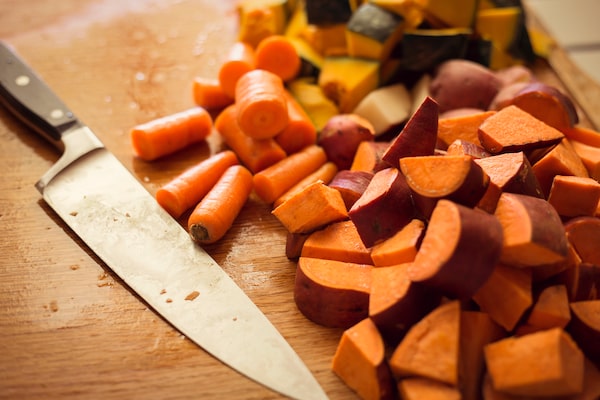
Sweet potatoes are related to the morning glory family, while yams, belong to the lily family.iStockPhoto / Getty Images
Many of us read nutrition labels to seek out better-for-you foods. Doing so makes it easier to choose the loaf of sliced bread that’s higher in fibre, the granola that’s lower in sugar and the yogurt that has more calcium per serving.
But when deciding between two healthy foods at the grocery store, you can’t always tell which one offers the biggest nutrition bang for your buck. That’s certainly true for foods that don’t display nutrition facts.
Take a few minutes to test your nutrition smarts. Which of the following foods offer the best overall nutritional value?
Sweet potatoes versus yams: The names of these two tubers are often used interchangeably, but they’re two very different vegetables, botanically and nutritionally.
Sweet potatoes are related to the morning glory family. The most common variety found in grocery stores has a copper or reddish skin, an orange flesh and is sweet-tasting.
Yams, which belong to the lily family, can have a light pink or brown-coloured skin and ivory, pale yellow or purple flesh. Yams aren’t very sweet and are starchier than sweet potatoes.
On the nutrition front, both are excellent sources of blood-pressure-regulating potassium and deliver a decent amount of fibre and vitamin C. When it comes to the antioxidant beta-carotene however, sweet potatoes outrank yams.
Per one half-cup cooked, sweet potatoes serve up 15.5 mg of beta-carotene; the same serving of yams has less than one. A daily intake of 3 to 6 mg of beta-carotene from fruit and vegetables is thought to help guard against chronic disease.
Almond butter versus peanut butter: Both nut butters serve up protein (7 g per two tablespoons) and are high in heart-healthy monounsaturated fat. And each provide potassium and B vitamins.
Almond butter, though, has the nutritional advantage over peanut butter, delivering seven times more calcium and 40 per cent more magnesium. Per two tablespoons, almond butter contains 110 mg of calcium and 90 mg of magnesium.
Plus, almond butter is an exceptional source of immune-supportive vitamin E, providing 7.7 mg (half a day’s worth) per two tablespoon serving.
White versus light tuna: Whether it’s white (albacore) or light (skipjack, yellowfin, tongol), canned tuna is an excellent source of protein, niacin, vitamin B12 and selenium, a mineral that plays a critical role in healthy thyroid function.
But if you’re also looking for anti-inflammatory omega-3 fats, albacore tuna is the better choice. Three ounces provide 860 mg of eicosapentaenoic acid (EPA) and docosahexaenoic acid (DHA) combined, three times more than light tuna.
There’s no official recommended daily intake for DHA and EPA, but many international health authorities and scientific organizations advise adults consume 250 to 500 milligrams a day to support heart health.
One downside to albacore tuna: depending on where it’s from, it can be high in methylmercury, a compound that can harm an unborn baby and young child’s developing nervous system.
For this reason, Health Canada advises women of child-bearing age and pregnant and breastfeeding women to limit their intake canned albacore tuna to 300 g (10 ounces) a week, about two tins worth. Kids aged 5 to 11 should eat no more than 150 grams (about one tin) a week; younger children should not eat more than 75 grams (about half a tin) a week.
However, albacore tuna that’s fished from the waters of the Pacific Northwest is low in mercury. When buying canned albacore tuna, look for “product of Canada” on the label. Canned light tuna is relatively low in mercury.
Kale versus spinach: Both of these leafy green vegetables offer a fair amount of fibre, calcium and magnesium and deserve a spot on your regular menu.
When it comes to antioxidants, though, spinach outshines kale considerably. Per serving, the leafy green delivers five times more beta-carotene (11.3 mg per one cup cooked), seven times more brain-friendly lutein (20.3 mg per one cup cooked) and twice as much vitamin E.
Compared to kale, one cup of cooked spinach is a good source of iron (6.4 mg) and an outstanding source of both potassium (839 mg) and folate (263 mcg). Spinach also is one of the best food sources of betaine, a phytochemical that acts as an antioxidant and helps fight inflammation in the body.
Leslie Beck, a Toronto-based private practice dietitian, is director of food and nutrition at Medcan. Follow her on Twitter @LeslieBeckRD
Sign up for the weekly Health & Wellness newsletter for the latest news and advice.